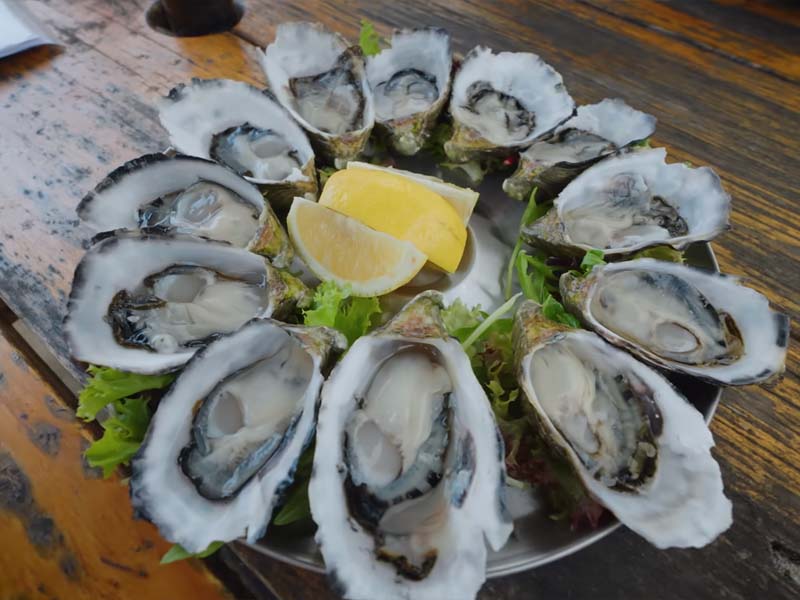The preservation of seafood is crucial for maintaining its quality, extending its shelf life, and ensuring its safety for consumption. Fresh seafood is highly perishable due to its rich nutrient content, moisture, and pH level, which are favorable conditions for the growth of spoilage organisms and pathogens. Hence, a range of preservation techniques has been developed over the years to combat this issue. This article will explore various methods of seafood preservation and their significance.
Traditional Methods
Drying: This is one of the oldest methods of preservation. Fish, especially, are often spread out in the sun to reduce their water content, making it less susceptible to bacterial growth.
Salting: Salt draws out moisture from seafood and creates an environment that’s inhospitable for bacteria.
Smoking: In this method, seafood is exposed to smoke, usually from wood. The smoke dries the seafood and imparts a distinct flavor.
Refrigeration and Freezing
Chilling: Keeping seafood at temperatures just above freezing (0°C to 4°C) can significantly slow down bacterial growth and enzymatic reactions, preserving freshness for a short period.
Freezing: Freezing seafood at temperatures below -18°C stops bacterial growth entirely and preserves seafood for extended periods, often several months.
Canning
In this process, seafood is sealed in a can and then heated to destroy bacteria. This method can keep seafood safe for consumption for years. The intense heat used in canning can alter the texture and flavor of the seafood, but it’s a trade-off for the extended shelf life.
Vacuum Packing
By removing oxygen, a primary element that bacteria require to grow, vacuum packing can significantly extend the shelf life of seafood. When combined with refrigeration or freezing, it offers even longer storage possibilities.
Modified Atmosphere Packaging (MAP)
In MAP, the air inside the packaging is replaced with a mixture of gases (like nitrogen and carbon dioxide) that slows bacterial growth. This method is often used in conjunction with chilling.
High-Pressure Processing (HPP)
This non-thermal method uses extreme pressure to deactivate bacteria and pathogens, thus extending the shelf life and retaining the seafood’s natural taste and texture.
Irradiation
Seafood is exposed to ionizing radiation, which kills bacteria and parasites. This method is effective but is not widely used due to concerns about the potential changes in the seafood’s nutritional profile and public perception.
Importance of Seafood Preservation
- Safety: Proper preservation methods prevent the growth of harmful bacteria and pathogens, ensuring that seafood is safe to eat.
- Economic Value: By extending the shelf life of seafood, producers and retailers can avoid losses due to spoilage, making the seafood industry more economically viable.
- Availability: Preservation techniques allow for seafood to be available even out of season or in regions far from the coast.
- Cultural Significance: Many preservation techniques, such as drying, salting, and smoking, have cultural importance in various societies, with recipes being passed down through generations.
How long can you preserve fish?
The duration for which fish can be preserved depends on the method of preservation used. Here’s a general breakdown:
- Fresh Fish (on ice): When properly stored on ice, fresh fish can last up to 7-10 days. It’s essential to ensure that the fish remains at a temperature just above freezing during this time. Keeping the fish well-drained and regularly changing the ice can help prolong freshness.
- Refrigeration: Refrigerated fresh fish, when stored at temperatures between 0°C to 4°C (32°F to 39.2°F), is best consumed within 1-2 days for optimal quality, although some fatty fish like salmon might last a bit longer.
- Freezing: Freezing extends the shelf life of fish significantly. When properly vacuum-sealed and stored at a consistent temperature of -18°C (0°F) or lower, fish can last:
- Lean fish (like cod or haddock): 6-8 months
- Fatty fish (like salmon or mackerel): 2-3 months
- Canning: Home-canned fish can be stored for up to a year in a cool, dark place. Commercially canned fish has a longer shelf life, often exceeding a year, but it’s essential to check the expiration date.
- Drying: Depending on the humidity of the storage environment, dried fish can last anywhere from several weeks to several months.
- Salting: Salted fish, when properly prepared and stored in a cool, dry place, can last several months.
- Smoking: Cold-smoked fish can be stored in the refrigerator for up to two weeks and in the freezer for up to 6 months. Hot-smoked fish, on the other hand, should be consumed within 1 week when refrigerated and can last up to 6 months in the freezer.
- Pickling: Fish preserved using vinegar or a brine solution, when refrigerated, can last several weeks to a few months, depending on the recipe and storage conditions.
- Vacuum-sealed: Vacuum-sealed fish can extend shelf life by reducing oxygen exposure, inhibiting bacterial growth. When combined with refrigeration or freezing, the storage time can be comparable or slightly longer than non-vacuum sealed fish.
It’s essential to remember that while these methods extend the shelf life of fish, the quality might diminish over time. It’s always best to consume fish when it’s freshest. Additionally, always inspect fish for any off-odors, discolorations, or other signs of spoilage before consuming, regardless of the preservation method.
In conclusion, as the global demand for seafood continues to grow, the significance of effective preservation methods cannot be overstated. These techniques ensure that consumers worldwide have access to safe, delicious, and high-quality seafood products.
